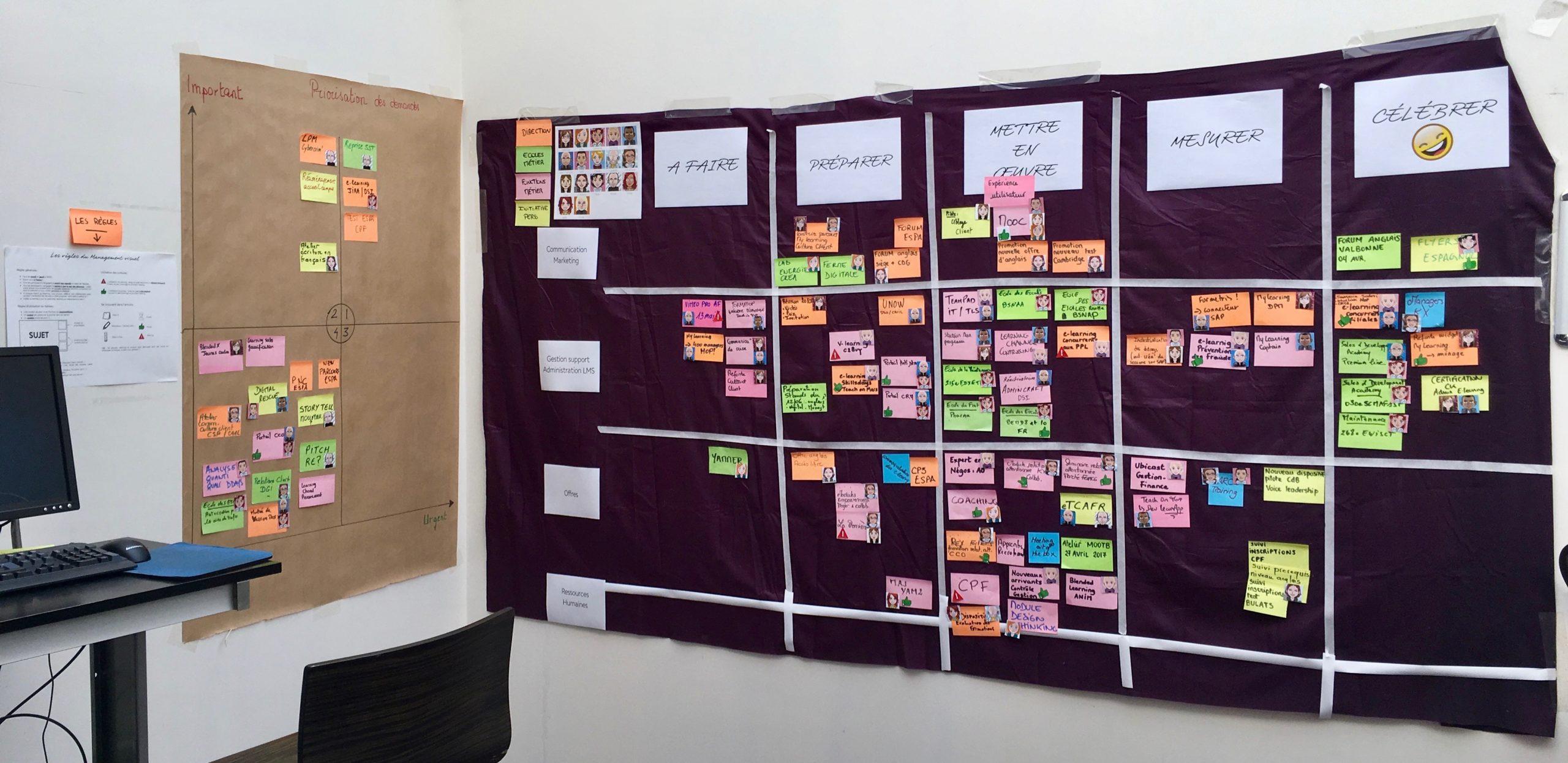Comme toute bonne chose à une fin, nous arrivons au dernier workshop du module Management Visuel : la rétrospective et la clôture. L’intention de ce dernier moment d’échanges est de reboucler l’expérimentation avec les objectifs initiaux et de partager ensemble les apprentissages du collectif.
Je décris dans cet article tout simplement les résultats obtenus comme exemples de ce que l’on peut espérer atteindre avec ce type d’accompagnement. Bonne lecture ! 🙂
Les articles liés :
- Agile Rocket : Module Management Visuel
- Workshop 1 : Kick-off
- Workshop 2 : Au Tableau
- Workshop 3 : Mise en oeuvre (Partie 1)
- Workshop 4 : Mise en oeuvre (Partie 2)
- Workshop 5 : Libre
- Module Management Visuel : Rétrospective et clôture
Organisation du workshop
Comme son nom l’indique, ce workshop est composé de 2 parties distinctes :
- un moment de rétrospective sur la période d’accompagnement
- un moment de clôture ou plus précisément d’ouverture pour entrevoir les possibilités du futur
Rétrospective
Sur cette idée initiale de Christophe Keromen, les participants vont devoir répondre aux 3 questions suivantes :
- Que vous a apporté le module Management Visuel individuellement ?
- Que vous a apporté le module Management Visuel collectivement ?
- Quels sont les questionnements que vous souhaiteriez partager ?
Note : les questionnements peuvent être de tout ordre et nourriront par la suite les échanges.
Voici les résultats obtenus pour la partie Individuelle :
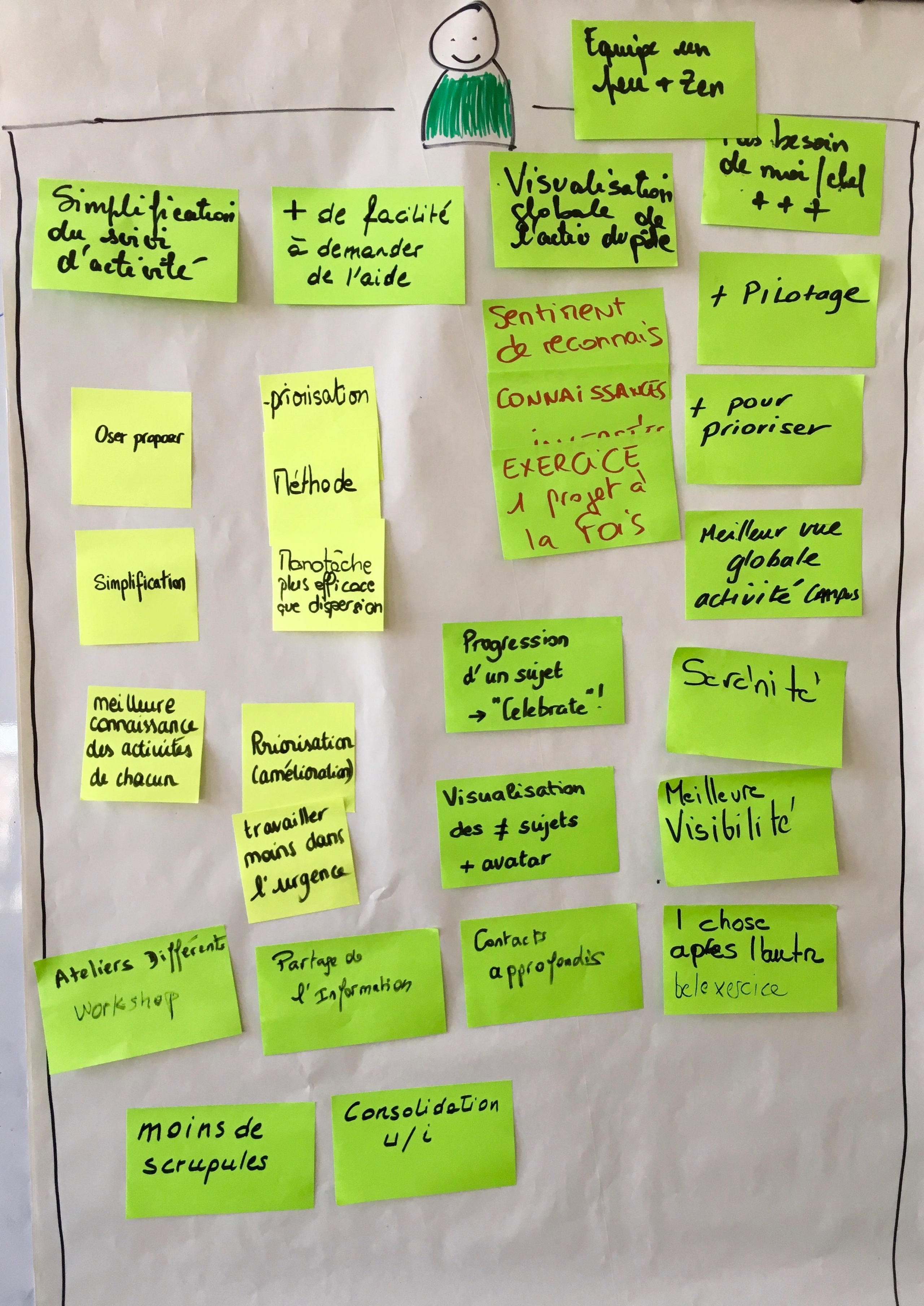
Les participants ont donc individuellement pu obtenir :
- Une meilleure visibilité globale sur les activités de chacun
- De la simplification
- Une meilleure gestion des priorités
- De meilleures interactions avec leurs collègues
- Plus d’opportunités de collaboration
- Plus de sérénité
Voici les résultats obtenus pour la partie Collective :
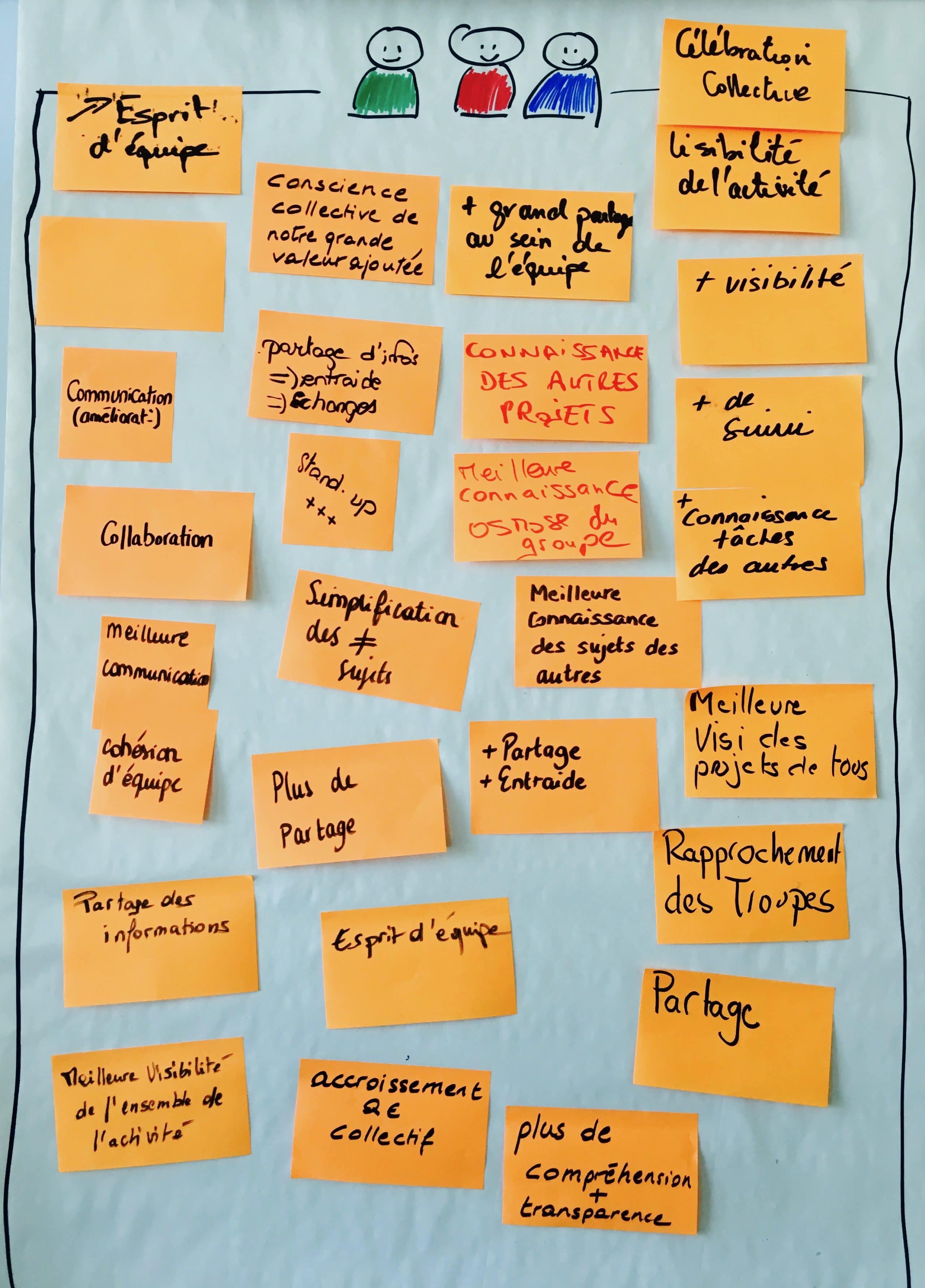
Les impacts perçus par les participants sur le collectif sont :
- Un meilleur esprit d’équipe
- Une meilleure collaboration
- Plus de partage
- Plus d’entraide
- Une conscience/célébration collective de sa grande valeur ajoutée
Si je reprends la vision qui avait été exprimée lors du Kick-off de l’équipe :
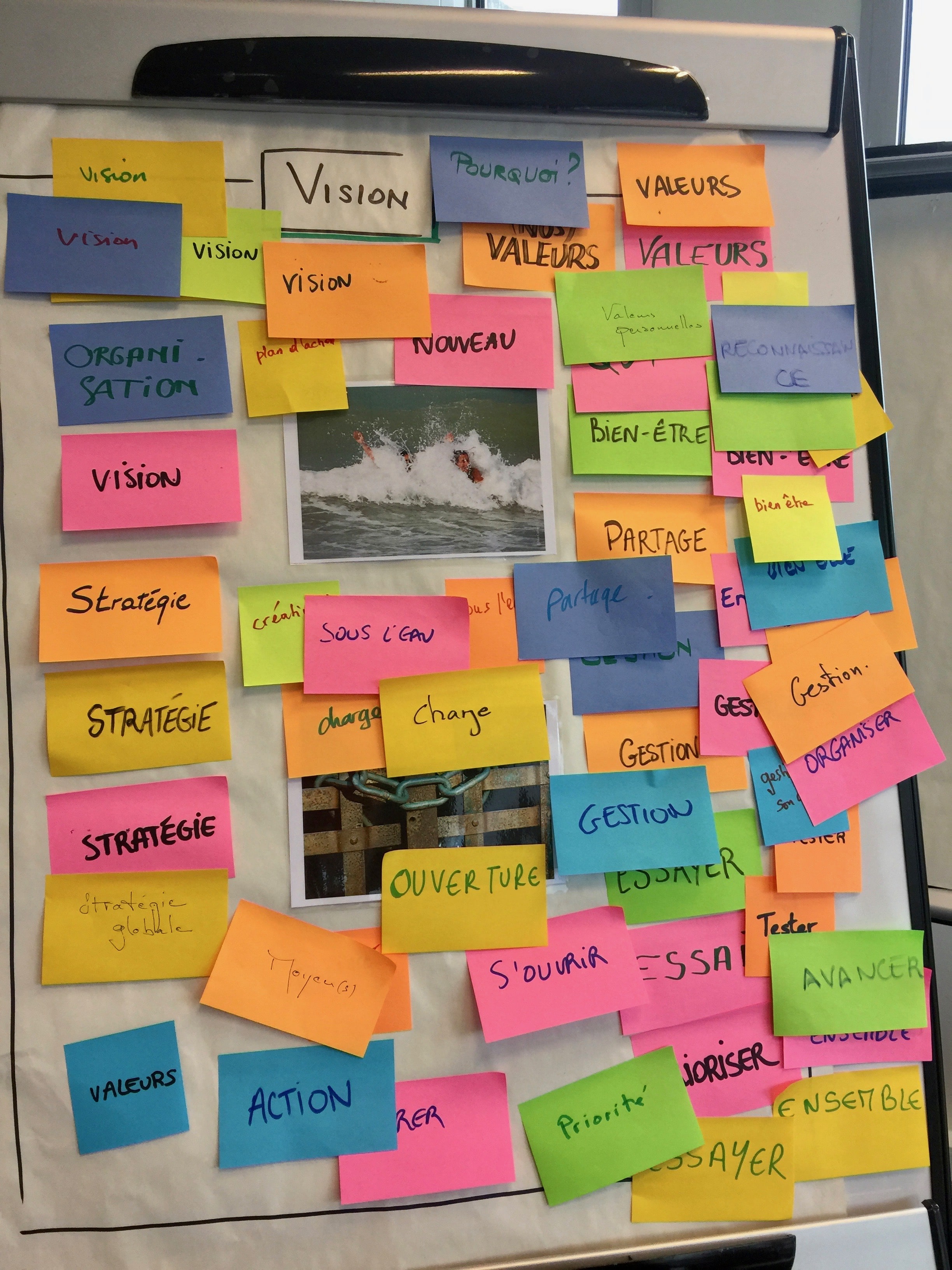
On se rend compte que les objectifs ont été atteints ! 🙂
Échanges et Ouverture
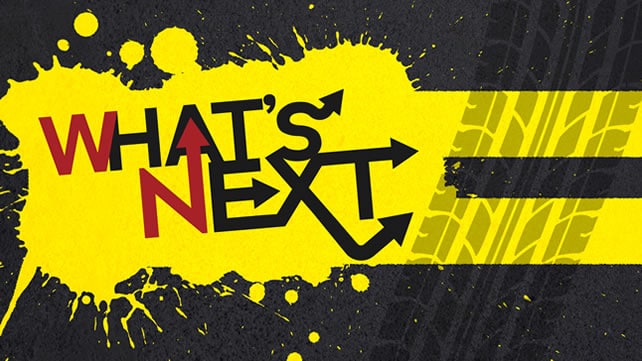
La partie questionnements est traitée séparément dans le sens où elle permet de générer des échanges que ce soit avec le groupe ou avec le coach. Dans ce cas ci, les sujets abordés tournent principalement autour de :
- Comment améliorer l’efficacité de nos Stand-up meetings ?
- Va t-on réussir à maintenir le Management Visuel sur la durée ?
- La fréquence du Stand-up meeting est-elle adaptée ?
- Et après ?
C’est sur le sujet du « Et après » que je me suis permis d’expliquer la métaphore de l’Agile Rocket à l’équipe. En effet, nous avions lancé le module Management Visuel avec une simple idée en tête : « comment transformer une somme d’individualités en un collectif qui prend de meilleures décisions ensemble ?« . Nous n’avons pas parlé d’Agilité, nous avons simplement répondu à un besoin en choisissant un outil qu’est le Management Visuel. Il était donc temps de prendre un peu de recul et d’avoir une vision un peu plus globale sur tout ce qu’il serait possible d’accomplir ensemble.
Ainsi, suite à la présentation de l’ensemble des modules de l’Agile Rocket, j’ai mis l’accent sur celui qui vient naturellement après : le module Amélioration Continue – renommé aujourd’hui « S’améliorer ». Après avoir la capacité de prendre des décisions ensemble, on se rend compte que l’on agit plutôt en réaction par rapport au système plutôt qu’en anticipation, ou en pro-action. L’idée du module suivant est de structurer une démarche d’amélioration continue pour pouvoir faire le pas suivant : changer les choses qui nous empêchent d’être performants et apprendre un protocole nous permettant d’élaborer, sélectionner et suivre des actions d’amélioration.
Je décrirais le protocole du Problem Solving Workshop de SAFe, base utilisée aujourd’hui pour le module « S’améliorer », dans un prochain article.
Conclusion
Cet article clôture ainsi la description du module Management Visuel (renommé « Collaborer ») mis en pratique sur un exemple concret. La photo ci-dessus correspond à l’une des dernières versions du Management Visuel de l’équipe.
Les différents workshops sont aujourd’hui suffisamment fiables pour être réutilisés tels quels, maintenant vous pouvez toujours les adapter avec des outils sur lesquels vous êtes plus à l’aise, tant que vous en gardez bien l’intention ! 😉
Les résultats obtenus avec cette équipe ont été très positifs, j’ai eu beaucoup de plaisir à les accompagner et à observer leur évolution. Maintenant, ces résultats sont surtout le fruit d’un fort investissement de l’équipe dans la démarche et d’un très bon état d’esprit, constructif et courageux.
Ainsi, en l’espace de 3 mois, sans parler de Scrum, ni Kanban, ni d’Agilité, il a été possible de créer une dynamique dans laquelle chacun s’est un peu plus ouvert aux autres afin de construire un futur meilleur ensemble ! 🙂

